Services
Sell services efficiently with the best ERP for the services industry.
WHAT WE DO?
Maximize service efficiency with ERPNext for the services industry.
Manage your Customers.
Assign dedicated account managers, Tax IDs, and tax categories for automatic tax calculations. Use different currencies for your overseas customers, and the exchange rates will be calculated automatically.
Store multiple contacts, emails, and phone numbers against a customer. Set a credit limit on customers to prevent further sales for customers with a big tab. Set up a loyalty program to build rapport with your customers.

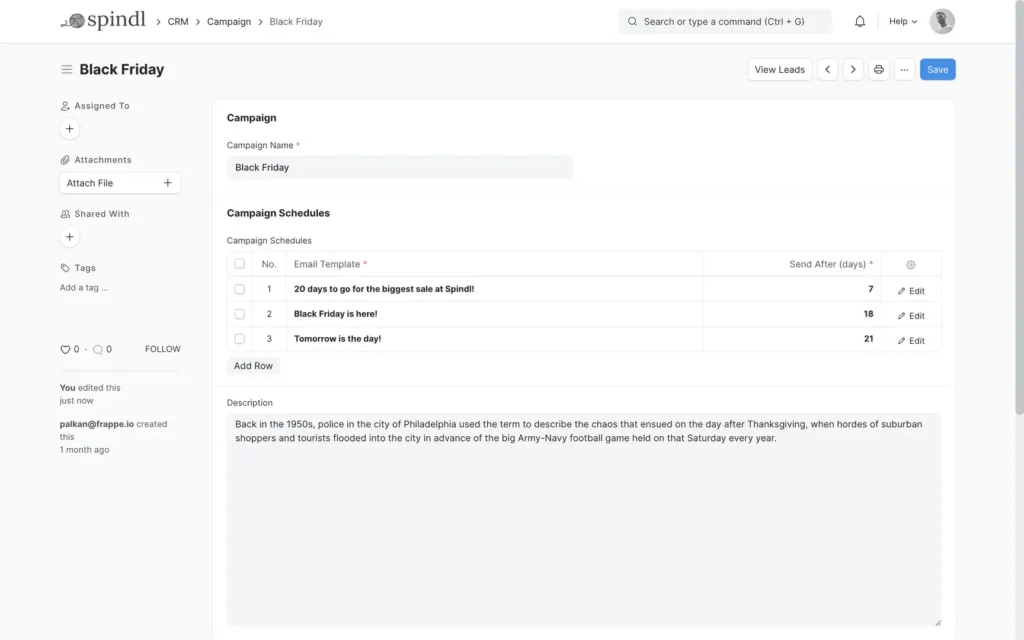
Campaigns
Customer acquisition can be difficult, especially when you’re starting out. With ERPNext’s Campaign feature, you can send emails to multiple leads and manage each thread separately.
Subscription
Set up different subscription plans and assign them to customers. Set a trial period for your subscriptions. Taxes and discounts can also be added to your subscriptions, just like any other regular item. The subscriptions can be repeated at varying intervals, daily, monthly, or once per few years. After the trial, invoices will be generated automatically.
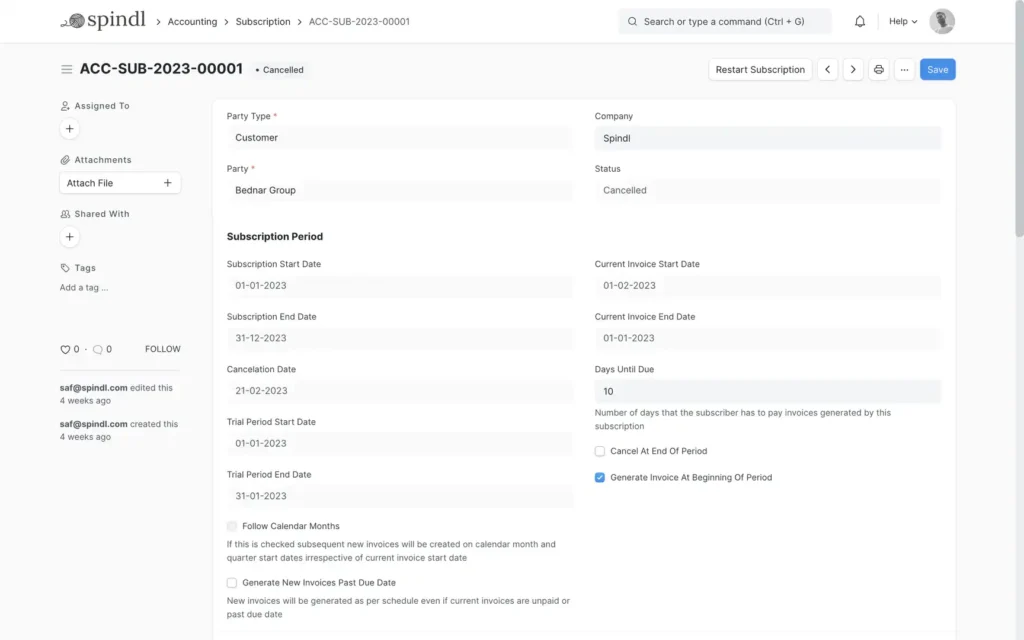

Project Management
Manage internal and external projects efficiently. Bill your customers for the employees you’ve sent to their site using the Time Sheets feature. Create and track tasks to keep your employees on their toes during important projects.
Gantt charts and Kanban boards help you track and visualize tasks for a quick and easy holistic view of your progress.
Help Desk
Usually, a services company will get more issues than a product company. We understand this, so we’ve created lots of features to organize and manage incoming issues.
With features like ‘Append To’, issues are automatically created in ERPNext when customers email issues to a configured email address. Classify issues by leads, projects, or companies. Record quality with information like minutes to first response and service level agreement.
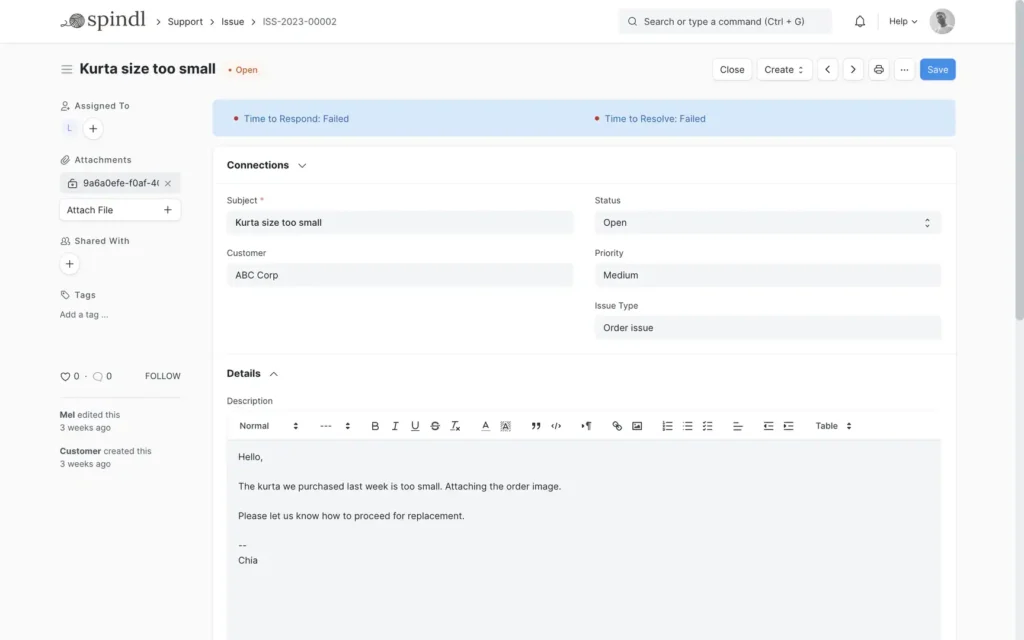
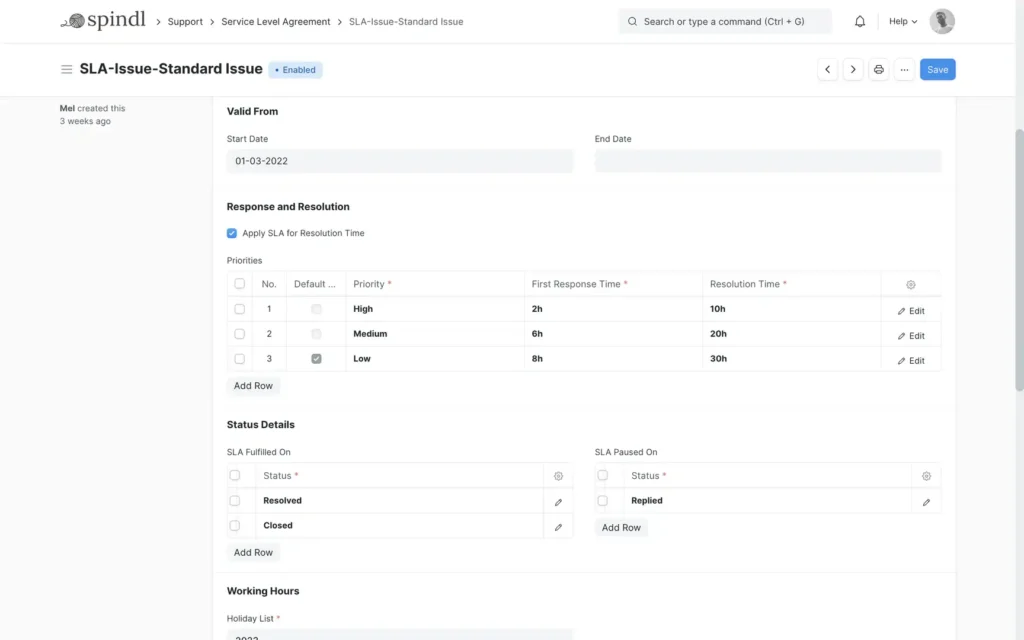
Service level agreement
Offering quick and quality resolutions to incoming issues is not easy. That’s why we have a Service Level Agreement feature to help you set and adhere to standards and keep your customers happy. With service levels measuring time to respond and resolve, you can set targets and take appropriate actions to make sure customers are satisfied. SLAs can be automatically applied to new incoming issues. Support hours can also be set to properly communicate expectations with your customers.
Record warranty claims
Easily record and manage warranty and annual maintenance contracts for different serialized items sold to customers. With serialized inventory, you can learn exactly which units are in or out of warranty/AMC.
For valid claims, set resolution and customer details. If an item is large or installed at the customer’s location, this can be handled with the Maintenance Visits feature.


Maintenance visit
When an item cannot be brought to your center, or you need to service it at the customer’s site, maintenance visits are absolutely necessary. Record the progress of the visits, scheduled or unscheduled. Record the person performing the visit and the work done.
Maintenance schedule
With an annual maintenance contract, regular maintenance visits are required to keep the service up and running at the customers’ end. Record these visits easily with maintenance schedules. With predefined periods, the schedule can be generated automatically.

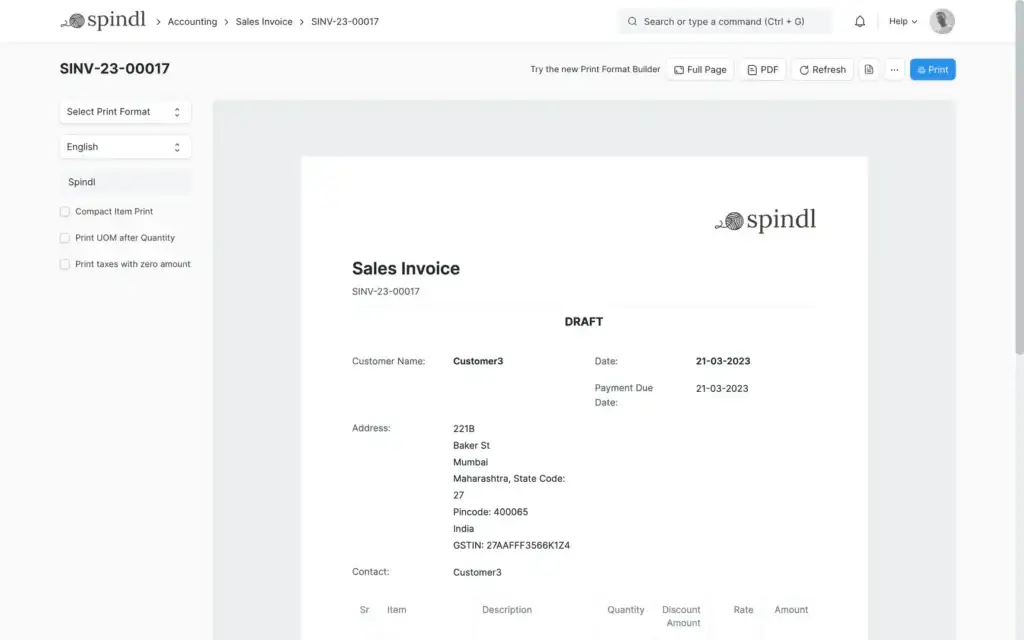
Billing and pricing
Handle your customer subscription billing lifecycle from end to end. Invoice your customers and chase receivable payments easily, with payment requests and notifications via email or SMS reminders. Create custom print templates for bills (using Jinja or HTML) and set up defaults in no time.
Multi-currency accounting
Managing transactions in different currencies is simple with our ERP software. Send invoices and add expenses in any currency, and let the system convert them to your base currency. You can even see financial transactions and reports in multiple currencies.
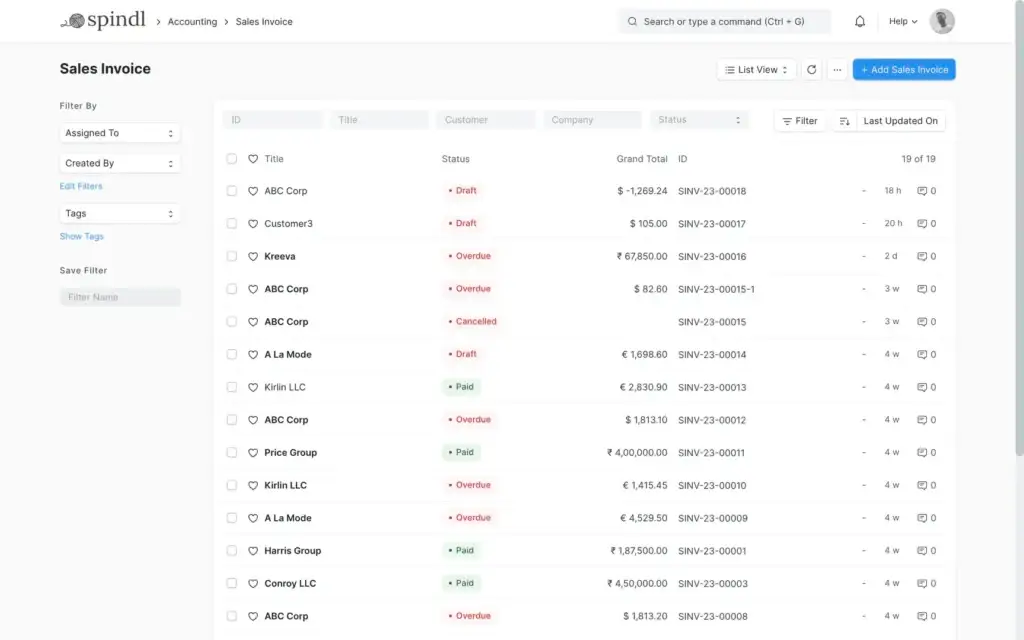

On-the-fly customizations
Create your own services ERP software. Map the data you care about by adding custom fields in your forms. Then customize form behavior by auto-fetching values, hide fields based on user roles, and create custom print formats — all without a single line of code.
FAQ
Frequency Asked Question
ERP (Enterprise Resource Planning) software for the service industry is designed to manage various aspects of service-based businesses, including project management, customer relationship management, billing, and resource allocation. This software helps streamline operations, improve efficiency, and provide better customer service.
ERP software can benefit your service-based business by:
- Automating repetitive tasks and reducing manual errors.
- Providing real-time data and insights for better decision-making.
- Enhancing collaboration across departments.
- Improving project management and resource planning.
- Enhancing customer satisfaction through better service delivery.
Key features to look for include:
- Project management tools
- Resource scheduling and allocation
- Time tracking and billing
- Customer relationship management (CRM)
- Financial management and accounting
- Reporting and analytics
- Integration capabilities with other software
Project management ERP software helps service-based businesses by providing tools to plan, execute, and monitor projects. It ensures that projects are completed on time and within budget by managing resources, tracking progress, and facilitating communication among team members.
Yes, ERP software can often be customized to fit the specific needs of your business. Customization options may include tailored workflows, personalized dashboards, and integration with other tools and systems your business uses.
The implementation time for an ERP system can vary based on the complexity of the business processes and the level of customization required. On average, implementation can take anywhere from a few months to over a year. It involves several phases including planning, configuration, testing, and training.
The costs associated with ERP software can vary widely depending on the vendor, the scope of the implementation, and the level of customization. Costs typically include software licensing fees, implementation and customization costs, training expenses, and ongoing maintenance and support fees.
To choose the right ERP software, consider the following steps:
- Identify your business needs and goals.
- Research and compare different ERP solutions.
- Evaluate the features and capabilities of each solution.
- Consider the total cost of ownership, including implementation and ongoing costs.
- Check for scalability to ensure the software can grow with your business.
- Seek recommendations and read reviews from other service-based businesses.
- Request a demo or trial to test the software before making a decision.
Cloud-based ERP software is hosted on the vendor’s servers and accessed through the internet, offering benefits like lower upfront costs, scalability, and remote access. On-premise ERP software is installed on your company’s own servers, providing greater control over data and customization, but often at a higher initial cost and requiring more in-house IT resources.
ERP software improves customer service by providing a centralized platform for managing customer interactions, tracking service requests, and ensuring timely delivery of services. It helps in maintaining accurate customer records, scheduling timely follow-ups, and providing a seamless and personalized customer experience.

